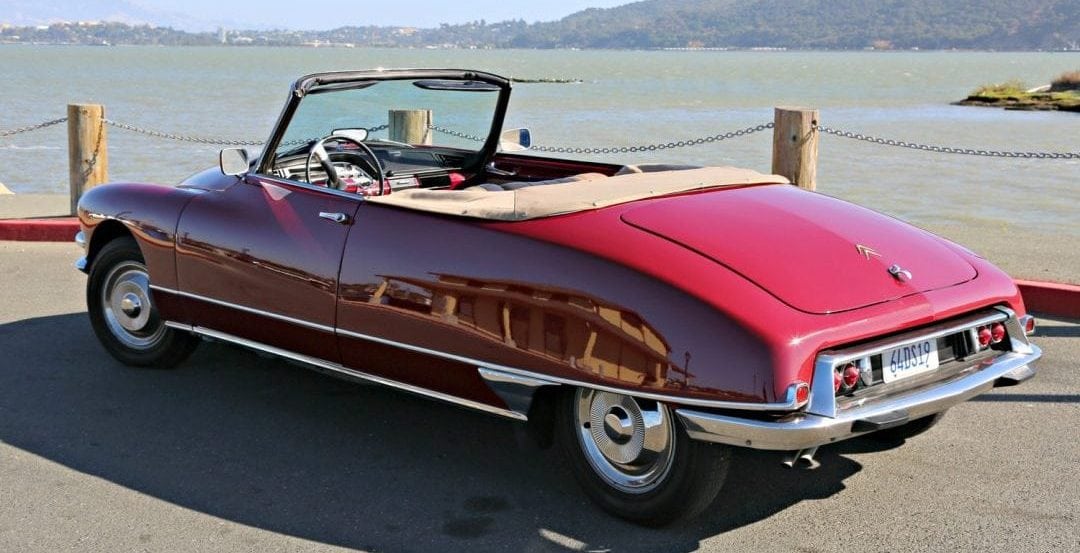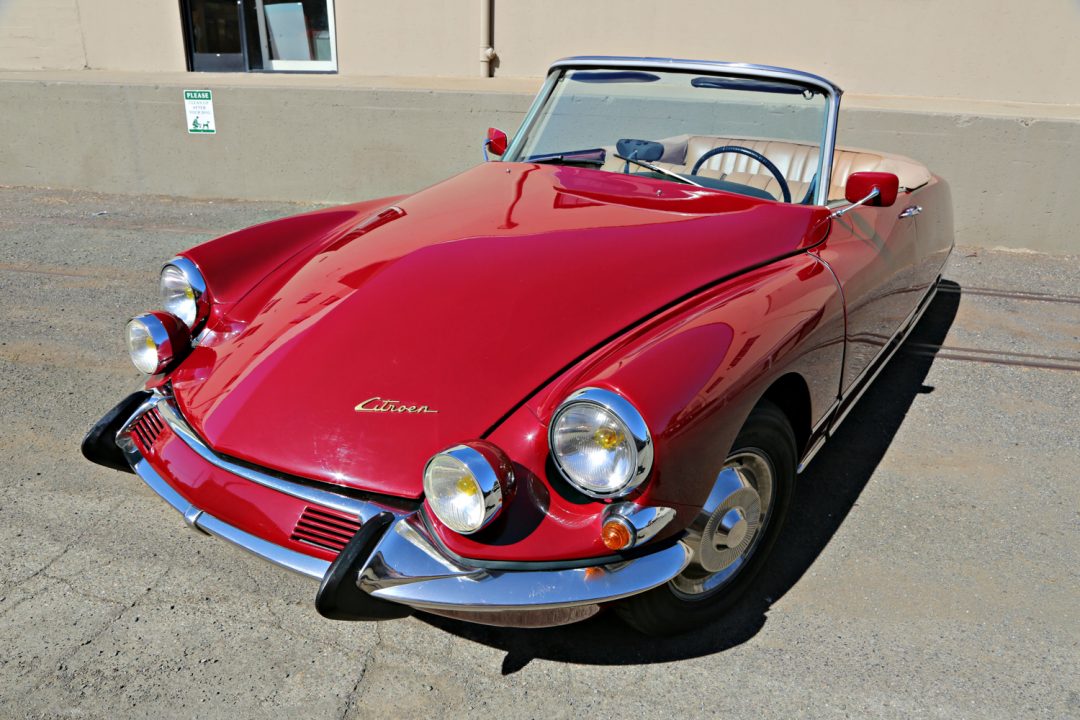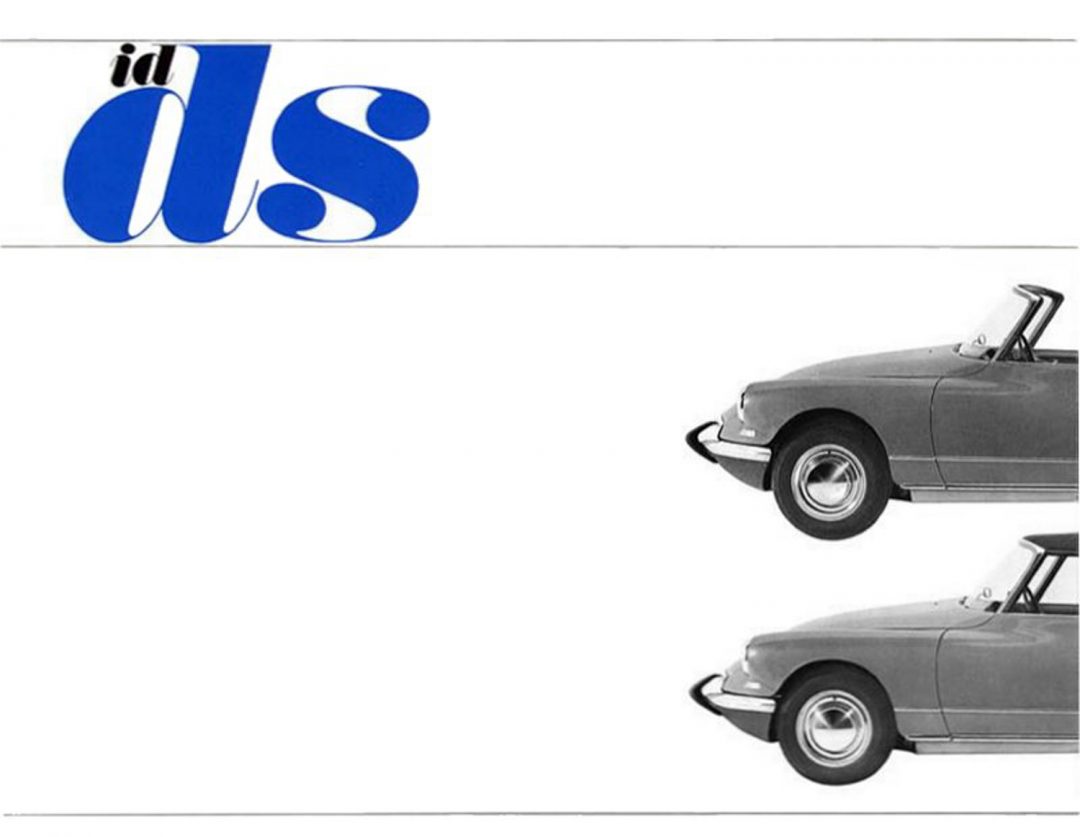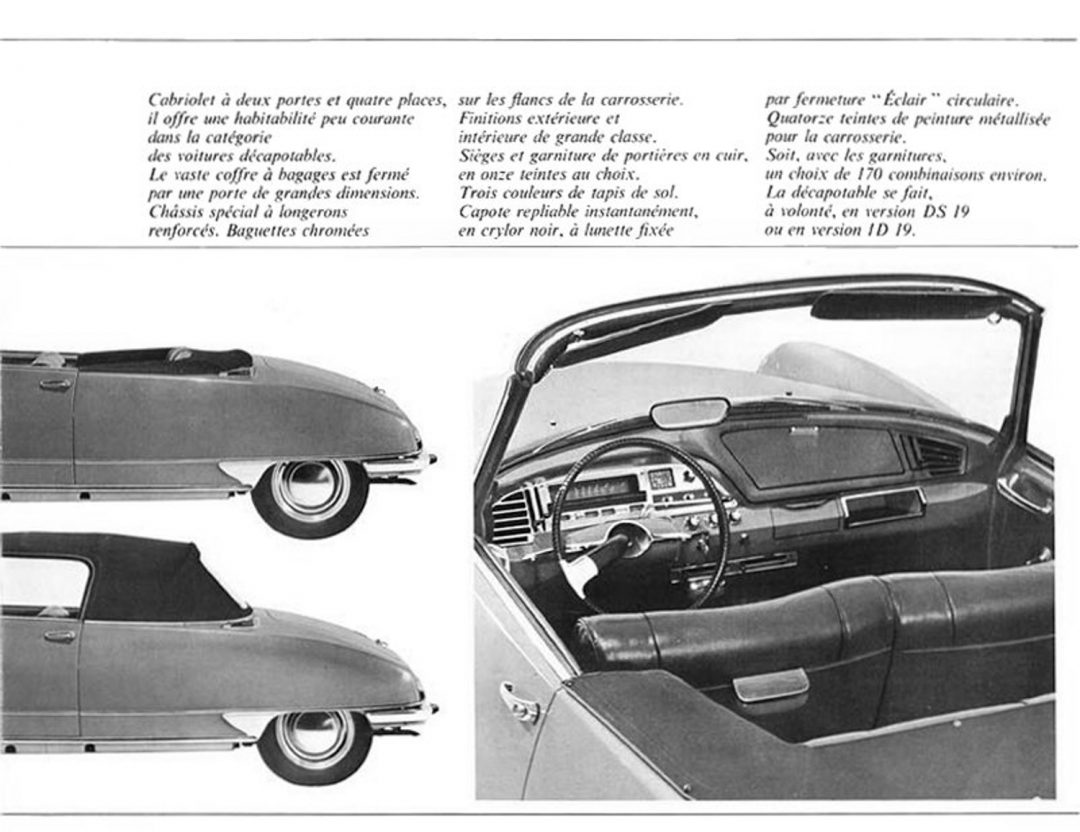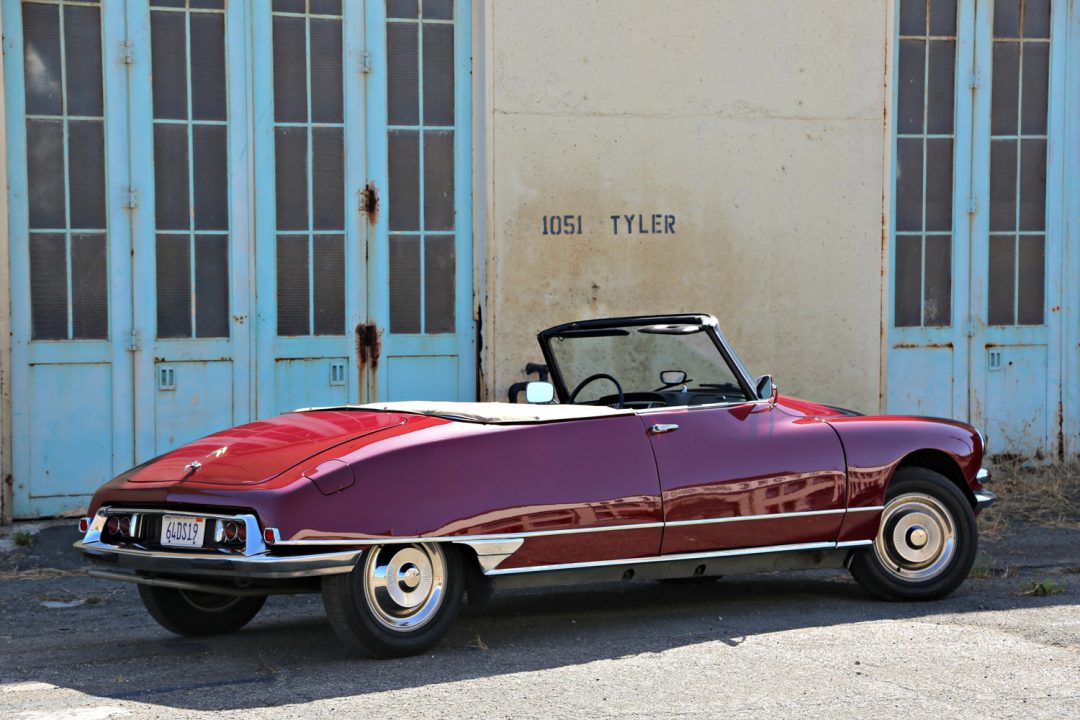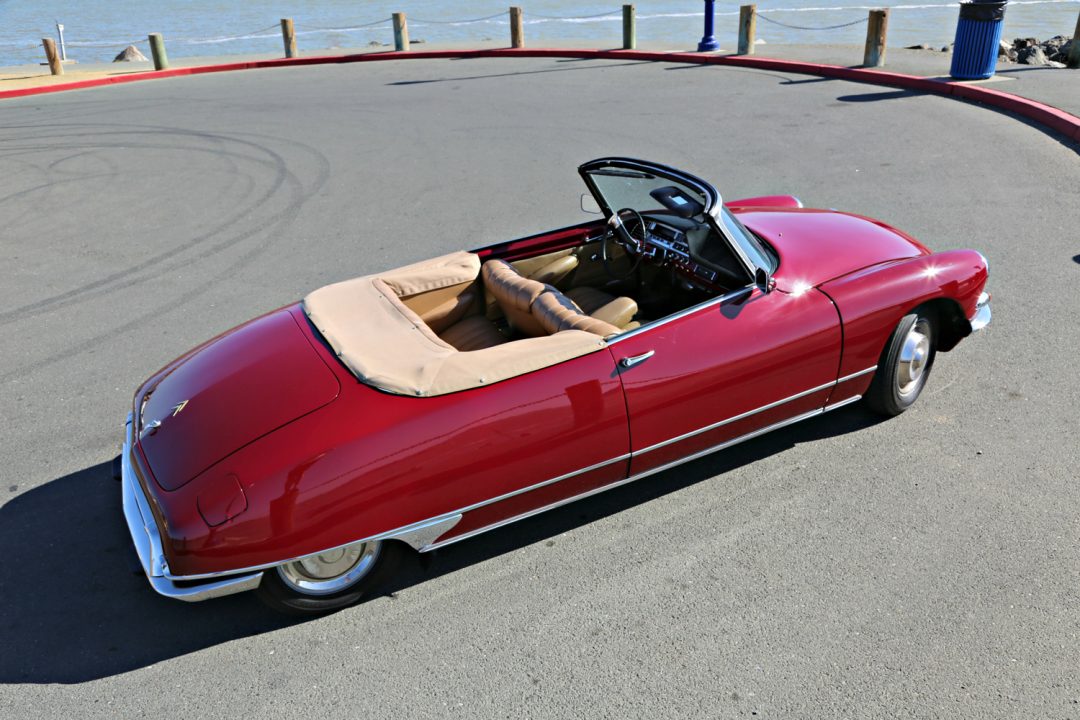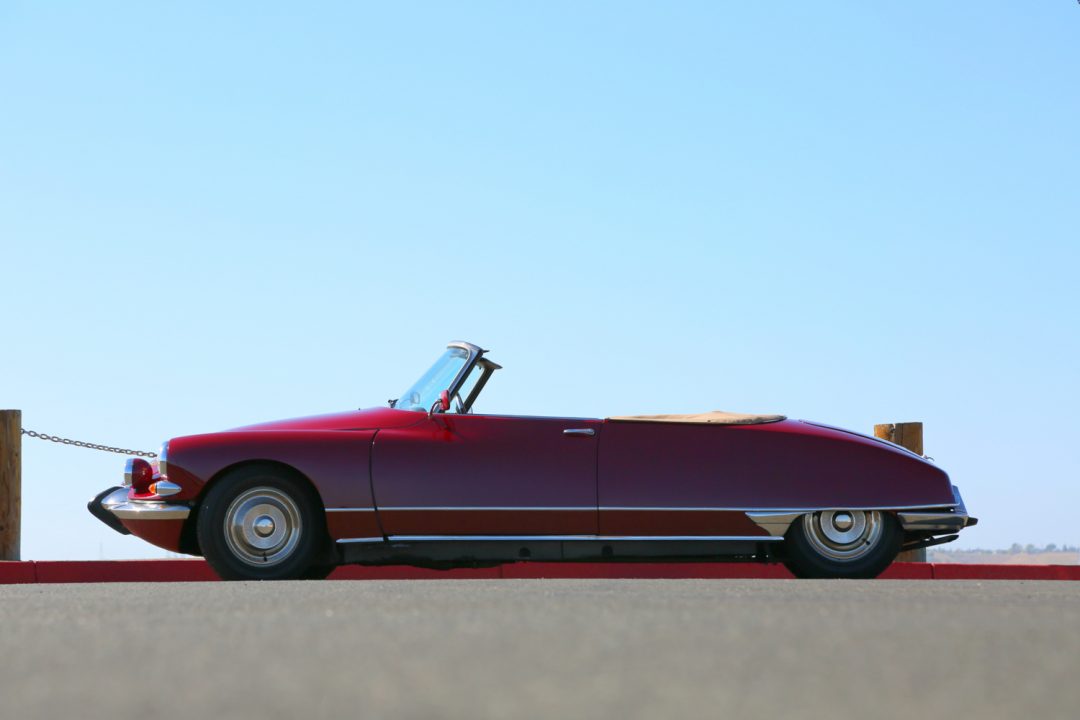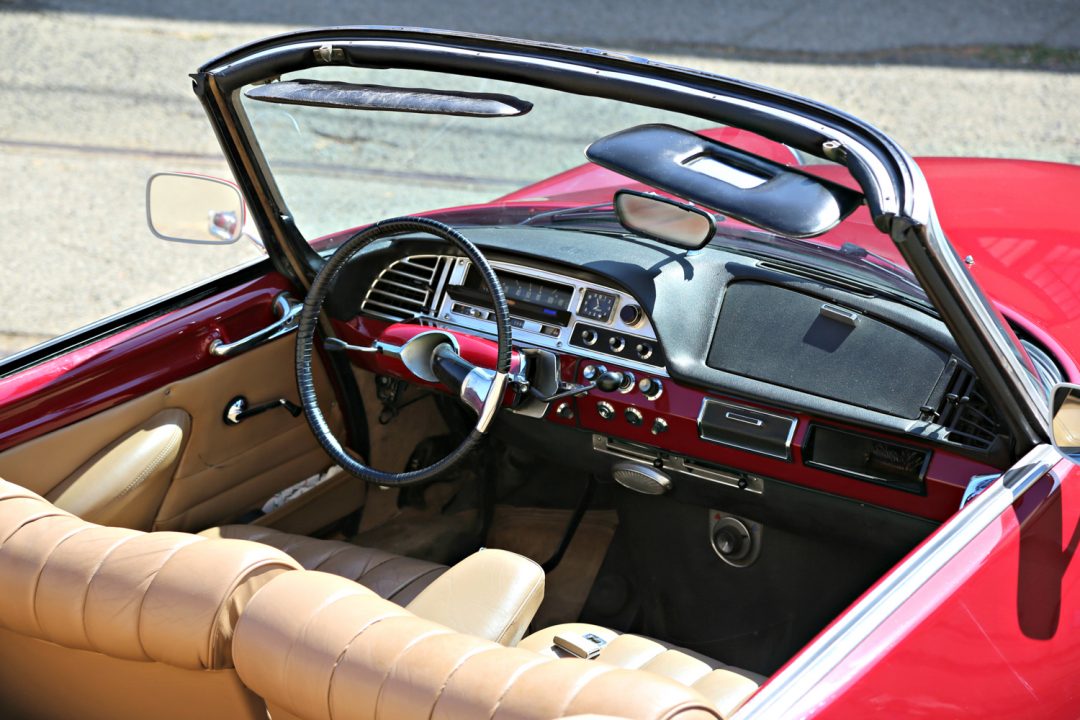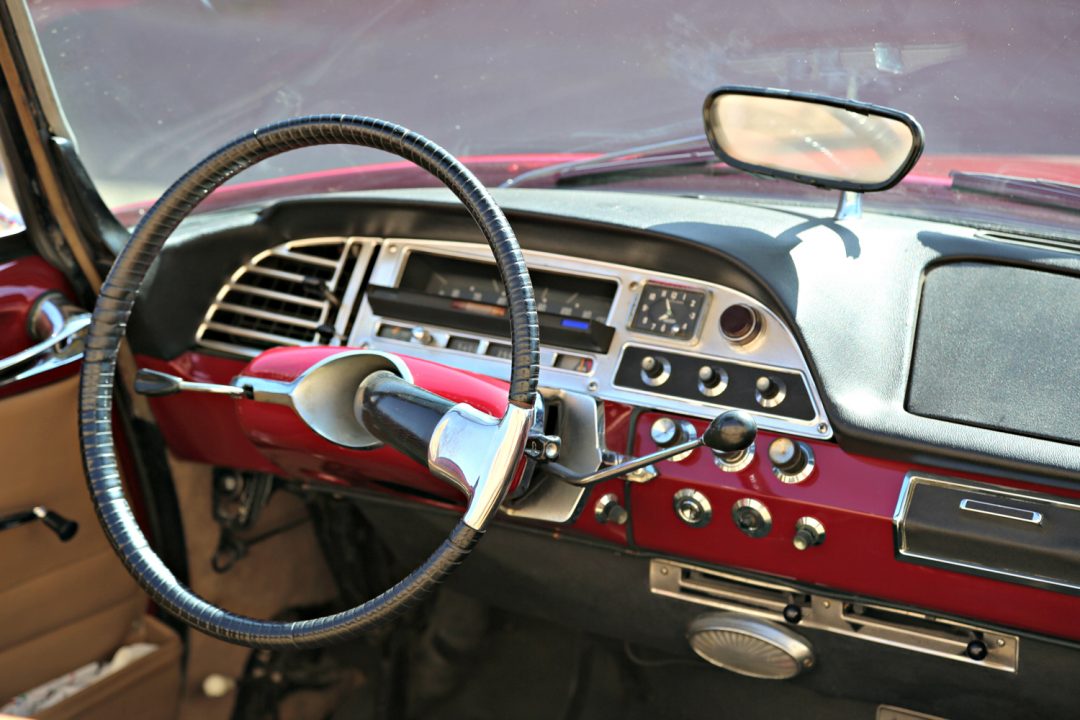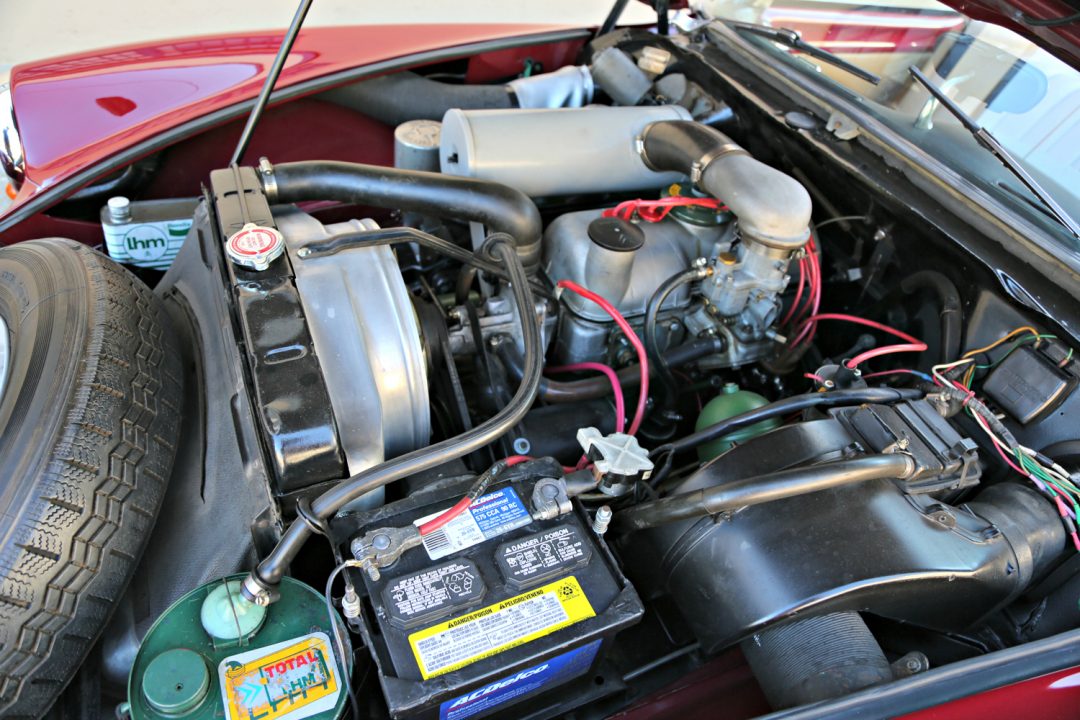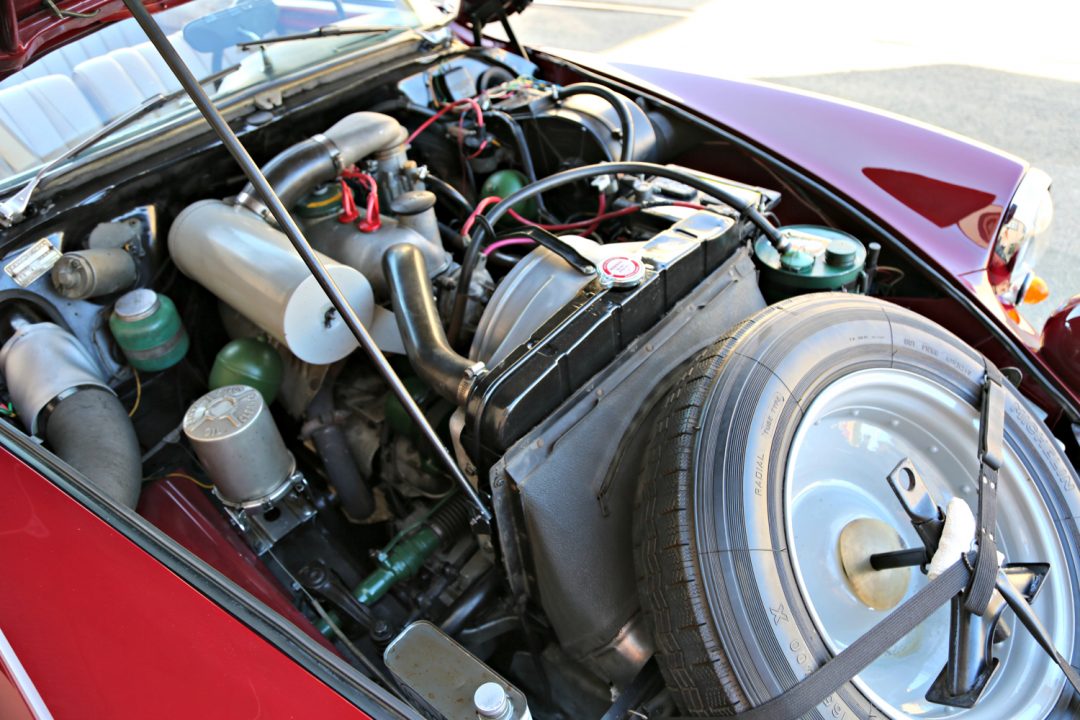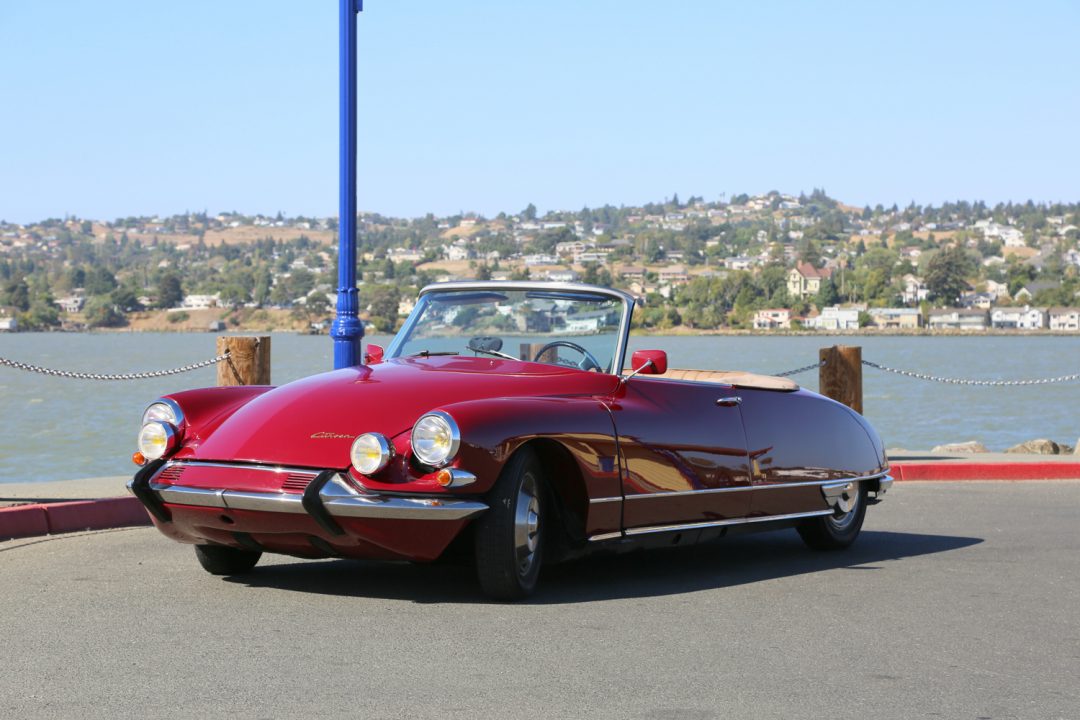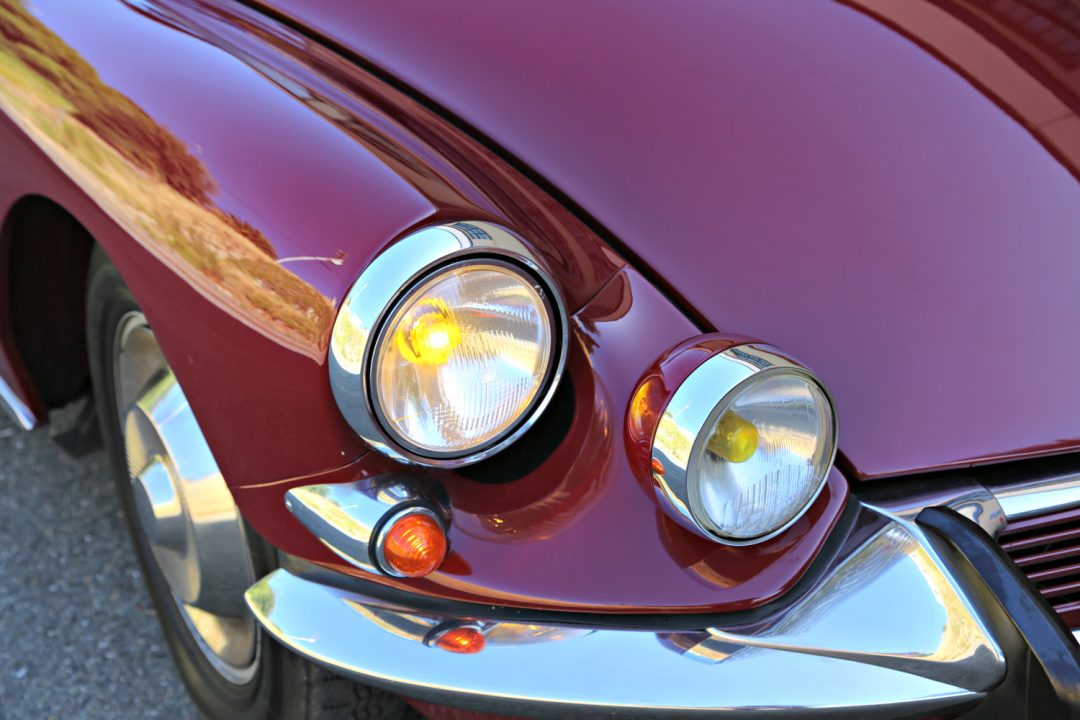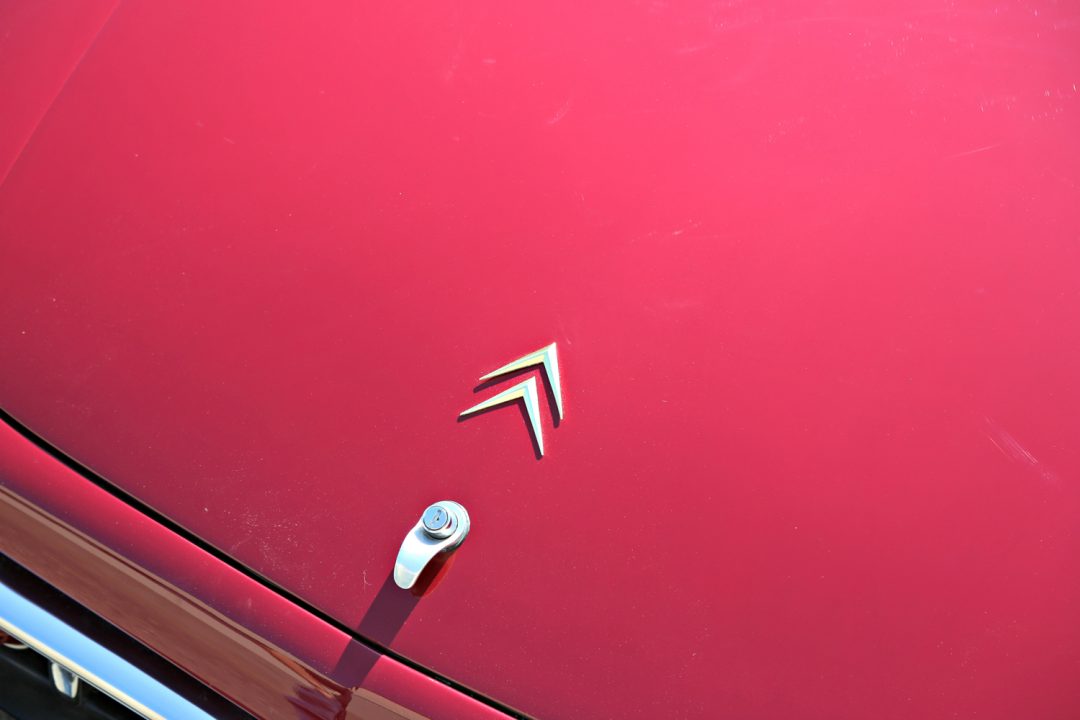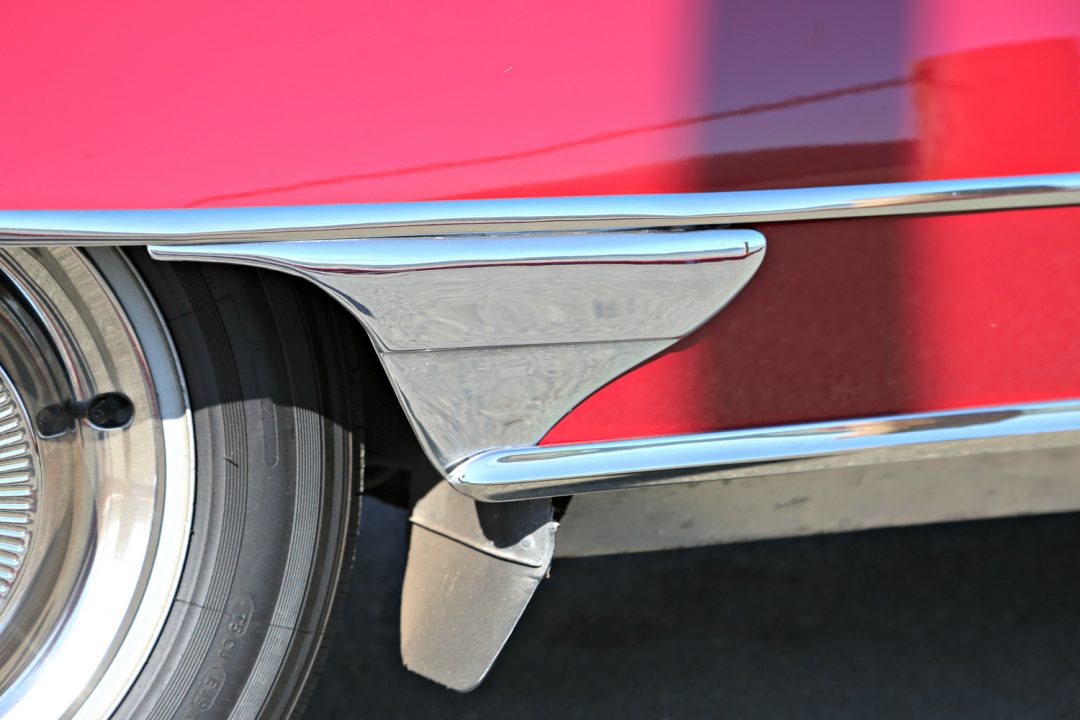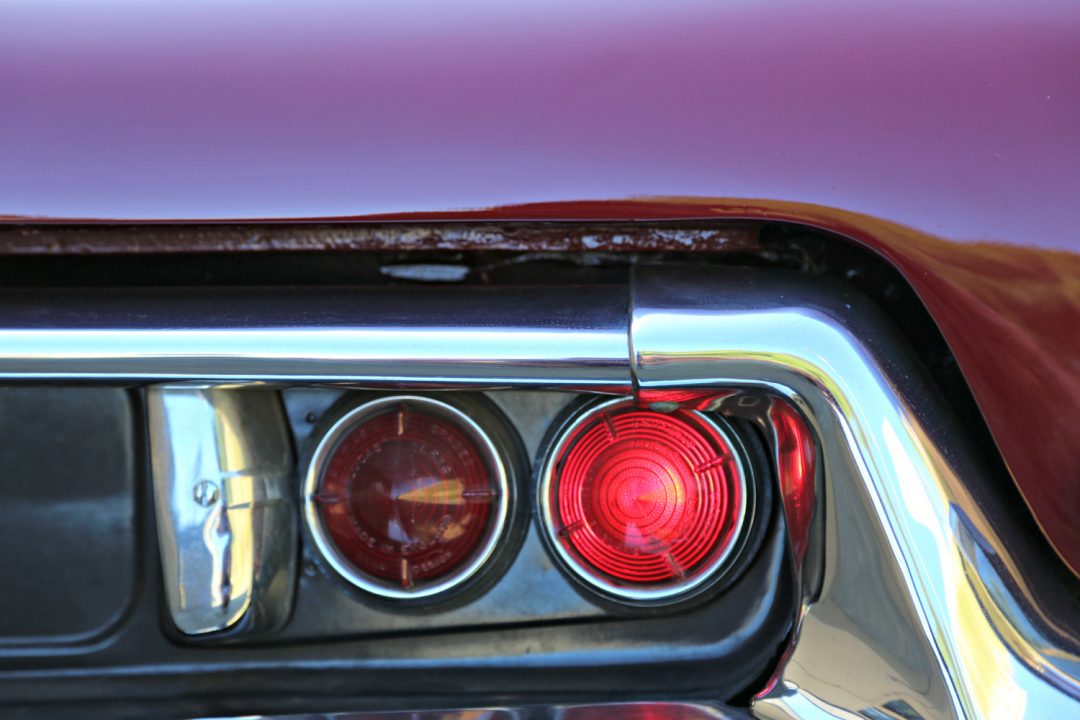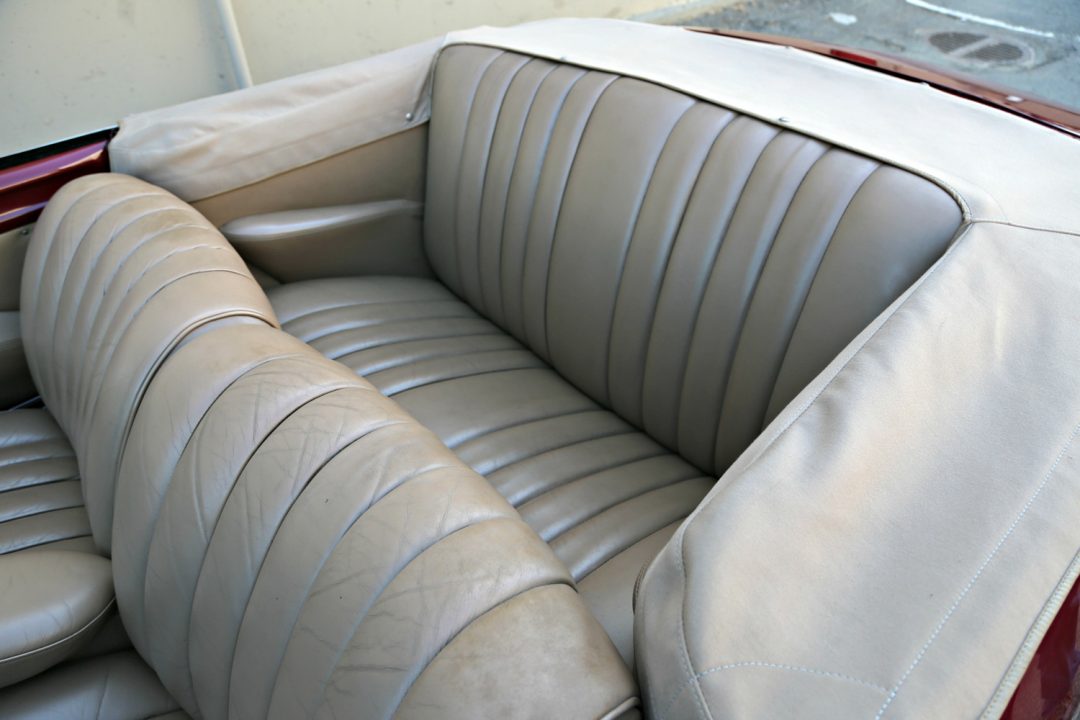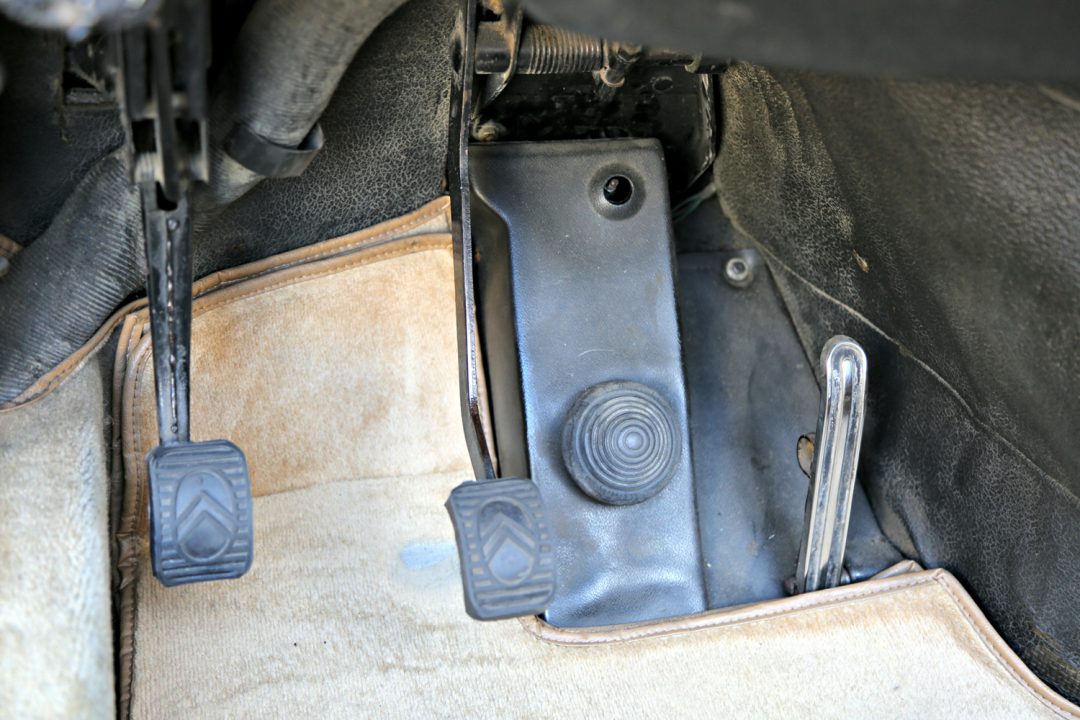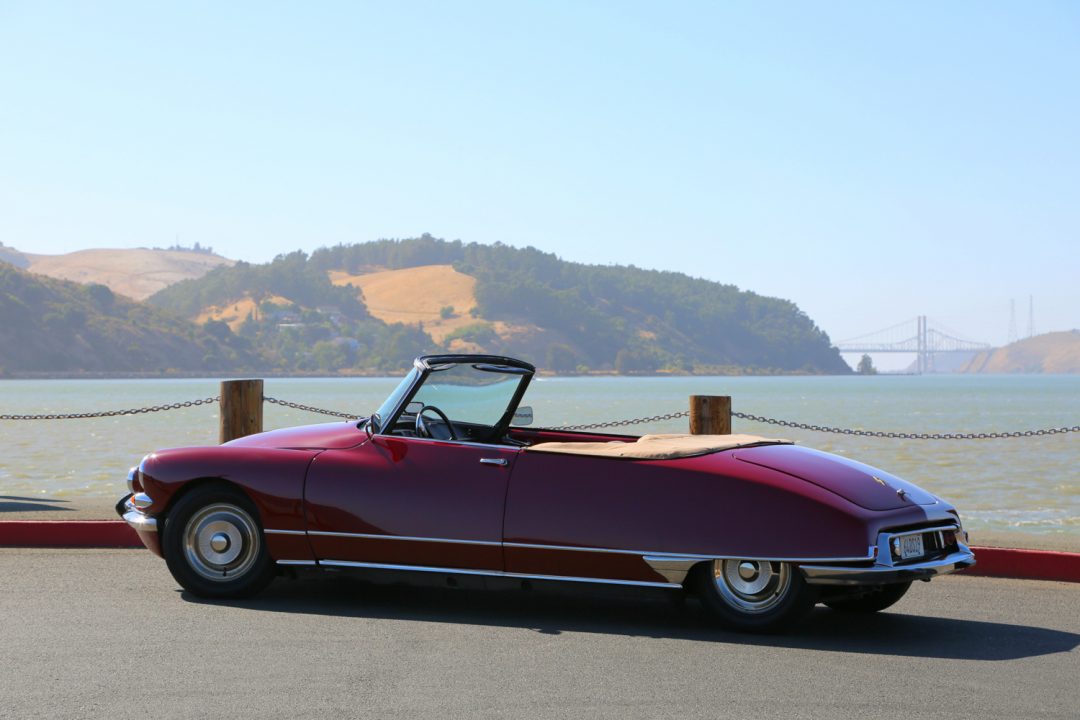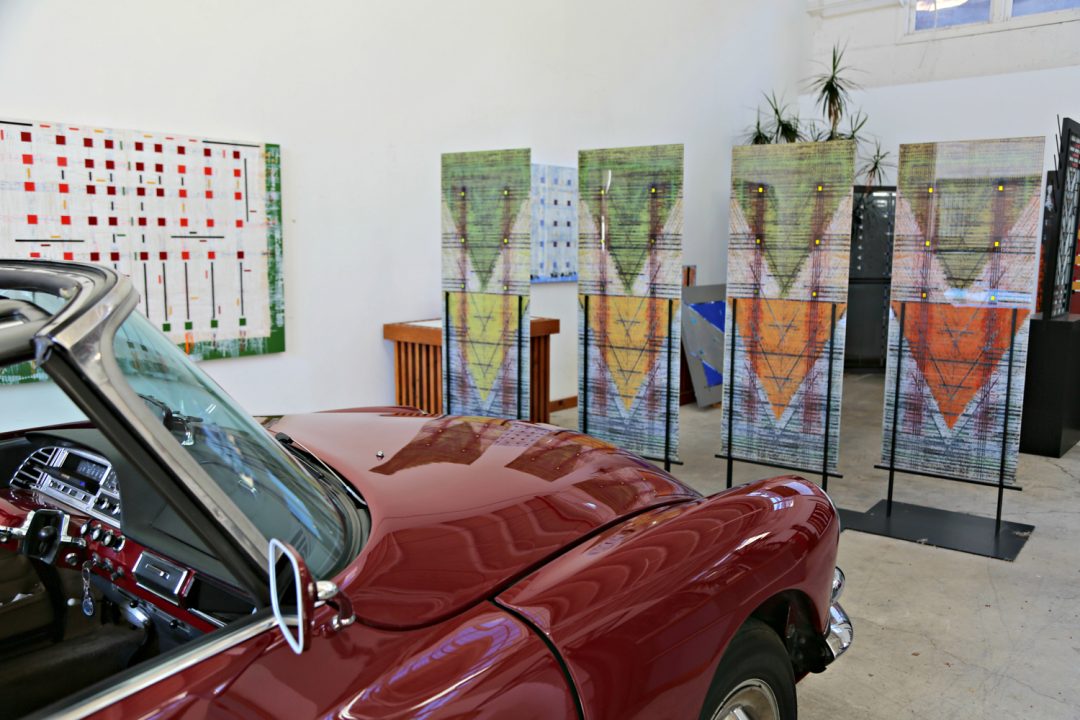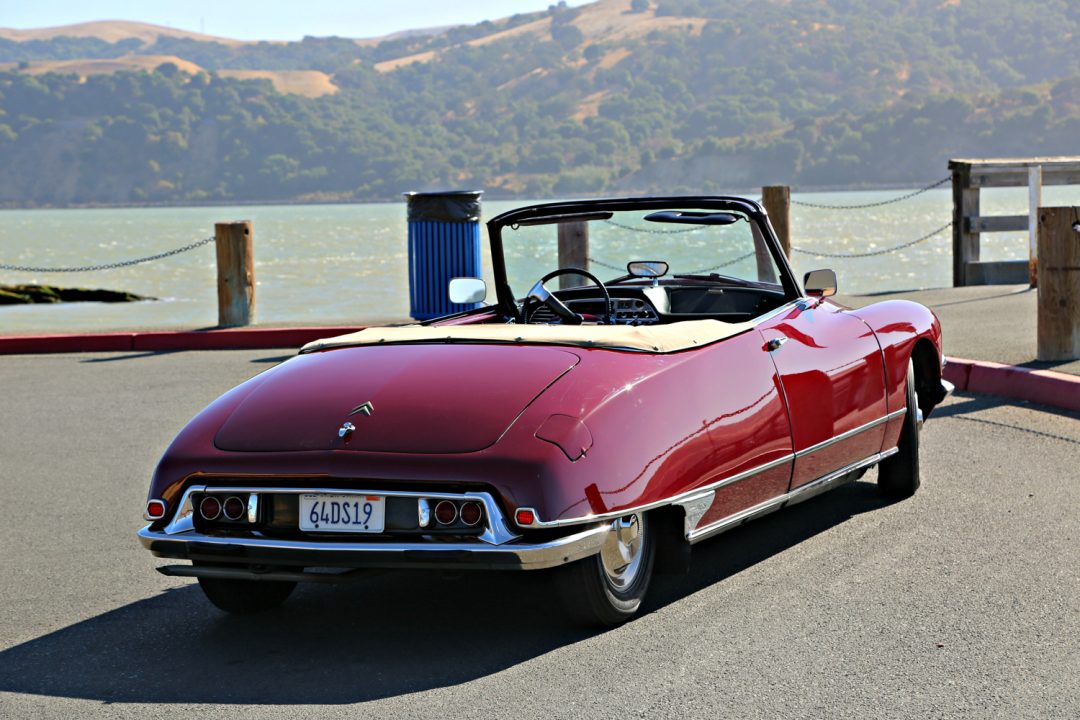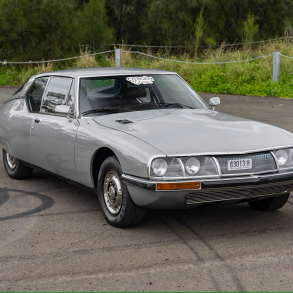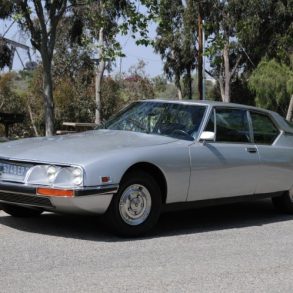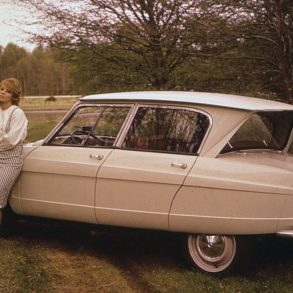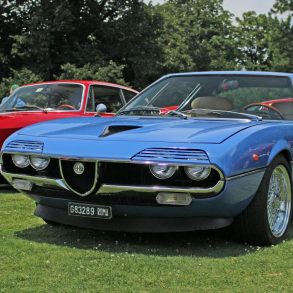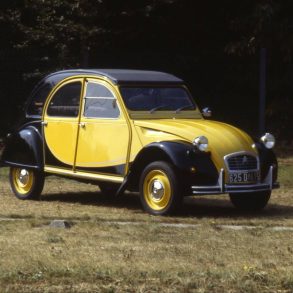What is art? A shape, a form, an abstract collection of ideas, an image created by man to invoke thought, reflection, passion, pleasure or even shock? In automotive terms, art is defined by a car’s styling. Some have referred to a car’s advanced or elaborate engineering aspects as a mechanical work of art. What one person may call ugly another will define as beautiful. An artist will look at an object and see the art in its design that some may not, whether it be a building, a piece of furniture or in this case, an automobile. This Citroën DS19 has fascinated one artist for over 40 years, appreciating it like a work of art and coveting it like the Goddess it is.
The French have a reputation for creating unusual and sometimes avant-garde designs, producing interesting and unusual automotive shapes. The coachwork of Saoutchik, Figoni et Falaschi, Franay and of course, Chapron come to mind, just to name a few. These coachbuilt bodies were expensive and flamboyant, created for the chosen few on the chassis of high-end luxury cars like Delahaye, Delage, Bentley and Tabo Lago. They were designed to attract attention and create a sensation when seen for the first time. Citroën was not a luxury car brand, but what they debuted at the 1955 Paris Salon, in October of 1955, certainly created a sensation with both the public and the automotive press. Enough so that Citroën had 749 firm orders for the new car by 9:45 am, and 12,000 orders by the end of the day. The new car was called the DS19, or Desiree Speciale 19. The word for goddess in French is Déesse, and sounds like DS when spoken in that language. A goddess had been shown to the automotive world, and there were many ready and willing to worship it then, and they still do today.
The artist that owns this 1964 DS19 is Arthur Stern. Stern specializes in architectural glass art, as well as sculpture and paintings, and his award winning work can be seen in public buildings and residential projects all across the country. His first encounter with a Citroën was while he was studying Architecture at the University of Illinois in Champaign-Urbana, in 1972. A fellow student had inherited a 1969 Citroën DS21 from his father, but he was leaving to study in Europe for a year, so he offered the car for sale. Being three hours away from the closest Citroën dealer, an ad for the strange looking French car in the local newspaper yielded no calls except from Stern. “I had seen a few Citroëns on the road while visiting California and thought that they were cool.” Stern recalls, “I bought the car for a great price and drove it across the country. I was headed to the San Francisco Bay Area to continue my studies at CCAC in Environmental design. It was a wonderful car and I got it for a price I just couldn’t pass up. I soon realized what a fabulous car it really was, very comfortable, the suspension was like floating on air. The steering and brakes were exceptional. While it was a bit eccentric looking, it suited my sense of design.”
The design of the DS19 is largely due to the efforts of Citroën’s chief stylist, Italian born Flaminio Bertoni, (not to be confused with Giovanni Bertone of Carrozzeria Bertone, to whom he was not related), and Citroën engineer André Lefébvre. Both men also worked on designing the legendary front-wheel drive Traction Avant, the first volume-produced monocoque (unitized) body car, introduced in 1934. The Traction Avant was discontinued in 1957. Although the DS19 was a completely new design, it carried over the now perfected and proven reliable front-wheel drive and 1.9-liter engine from its predecessor. The 19 in DS19 refers to the 1.9-liter engine displacement.
Compared to many of the chrome laden cars of the era, the design of the DS19 was sleek and clean, devoid of any unnecessary and non-functional styling embellishments. With its shark-nose front, sans grill, long swept-back plunging hood and smooth sides tapering back to the rear, it not only looks futuristically sleek, but it is significantly more aerodynamically efficient than most cars produced for 20 years after its debut. The front to back inward taper of the body is accentuated by the rear track being almost eight inches narrower than the front. The rear wheels are located very far back on the chassis, giving it long a 123-inch wheelbase and allowing for a generous amount of interior space. Only available as a four door sedan initially, a station wagon was added to the D Series lineup in 1958. A convertible would come later.
Stern had driven across the country in his 1969 DS12 when he first laid eyes on a DS convertible. While getting the oil changed in his DS station wagon for the first time at Executive Motors, the premier Citroën dealership in San Francisco, he walked into the waiting room. “There was Jack Casady, bass player for the Jefferson Airplane and Hot Tuna, reading a Zap magazine, waiting for his car,” explains Stern. “ When his car came down the ramp it was a Citroën DS convertible, the first one I had ever seen….I didn’t even know they made convertibles.” It was love at first sight. He knew he had to have one.
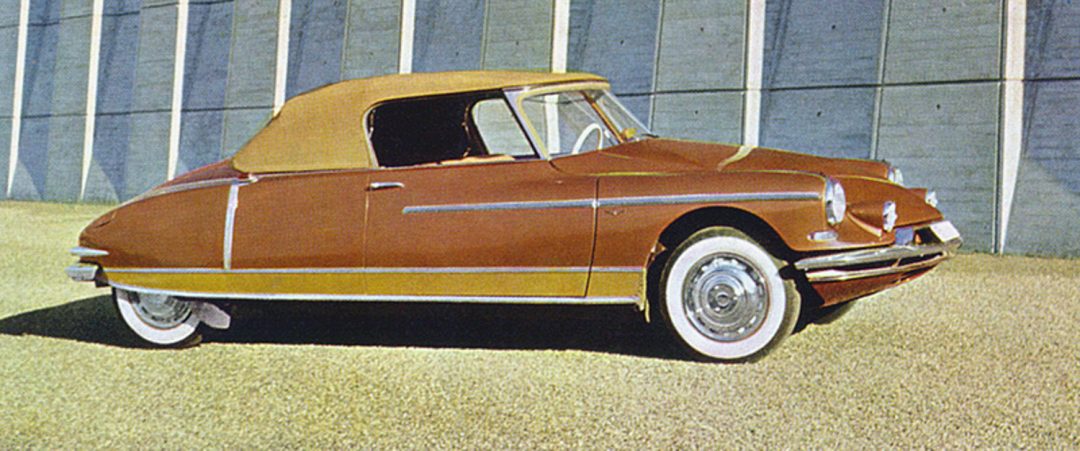
The world first laid eyes on Citroën DS19 convertible or decapotable, in 1958, when Henri Chapron, an independent coachbuilder located in Paris, debuted his La Croisette Cabrioet at the Paris Auto Show. The modified convertible was not authorized by Citroën, instead Chapron purchased a new DS19 and made the modifications at his shop. Chapron continued to build DS19 convertibles for his well-heeled clientele, and public demand was great. Chapron’s success with these custom-made convertibles did not go unnoticed by Citroën, and in 1960 a deal was struck between Chapon and Citroën to produce a factory, or Usine, convertible. Knowing that cutting the roof off a sedan would compromise the structural integrity of the body, a station wagon was used to start with, as it was already structurally beefier than a sedan and additionally reinforced by Chapron. From the cowl back, the entire body was unique to the convertible. The rear seat was narrowed to allow for the convertible top to be lowered down into the body, flush with the beltline. There was no quarter glass, making the top wrap around to the door glass instead. The car looks quite elegant with the top up, but visibility is compromised considerably.
Chapron sold a few handmade convertibles before a production model was ready to be shown to the public in October of 1960. Citroën began selling the production convertible modified by Chapron the following year. Sales of the convertibles were limited by the time it took Chapron’s shop to create one. The process was very labor intensive and costly. The price of a new Chapron convertible was double the cost of a comparable DS sedan, priced around the same as a new Cadillac convertible in America, at about $5600. The cost and production time kept sales low, but the company gained prestige when open air versions of DS Citroëns started showing up in movies and at night clubs, sometimes with celebrities behind the wheel.
The Goddess Appears
For Arthur Stern, the search was on for a DS convertible. There were only a handful of convertibles in the Bay Area, and Stern approached the owners whenever he saw one in for service at the dealership or elsewhere. The Chapron convertible is rare, especially in the U.S., but Stern kept looking. After two years of searching, a 1964 DS19 convertible was traded in at Executive Motors by its original owner on a Citroën-Maserati SM and offered for sale. This was at last Stern’s chance to acquire his dream car. He had traded his DS21 sedan for the 1972 DS station wagon and now he traded in his clean, low mileage wagon in on the convertible. “I traded my nice low mileage wagon and all the money I had, to buy the Chapron-bodied DS cabriolet with over 150,000 miles on it. I just had to have it,” tells Stern. “I was in graduate school at the time and working part-time for architects and interior designers as a draftsman. I had just enough money left to buy a bottle of French champagne as a gift to the owner of Executive Motors as a token of my appreciation, as I had finally bought the car I had dreamed about. The Citroën DS Decapotableas the French call it, is in my opinion one of the most beautiful four-seat convertibles ever made. An eccentric and beautiful car, perfect for an artist!”
Stern was just about to open Arthur Stern Studios when his dream car became his. He used it everyday for transportation for several years before the Goddess became tired and started showing her age. No longer useable as an everyday car, Stern parked it in his studio. The car sat for several years until he could afford to undertake a restoration. “Starting out as an artist means there were going to be many financial ups and downs”, says Stern “ A commission would come in and I would have some money, then it would slow down again and I thought I would go broke. I must admit I was tempted to sell the car during a few of the slow times. People always wanted to buy it from me. In fact, they still do today. But then a nice commission would come in and I would decide to keep it.”
After sitting for seven years, Stern brought the car to Jacque Abot‘s shop in Santa Cruz, CA. Abot and his mechanic Lon Price have a reputation for restoring convertibles and took it on as their back room project. Stern paid them whatever he could afford on a monthly basis for several years until the mechanical restoration was complete. Now with the car back in fine running order, it was time to tackle the cosmetics. Over the next few years, Stern spent money on the restoration when he could afford it. A new top one year, a new interior the next, and so on. When it was time for paint, Stern brought the car to Henry Hanzel. He was considered a marque expert, and ran a third generation body shop in Oakland, CA. Hanzel’s father was one of the first Citroën dealers in the Bay Area. The restoration was completed there and Hanzel became Stern’s Citroën mechanic for decades, sometimes joining Stern on Citroën club tours with his own DS. Before Hanzel retired, the Goddess was treated to one last beauty treatment that included a fresh paint job to remove the chips and scratches acquired over a few decades of driving for pleasure. The car is currently maintained by Lon Prince once again.
Driving a Citroën DS is truly a pleasure indeed. So much so that comedian, noted car collector and Citroën DS owner Jay Leno recently stated: “When you get behind the wheel of a DS you literally fall into a big easy chair that wraps itself around you.” Leno gives this advice: “If someone offers you a ride in a DS, take it. It’s the most comfortable motoring experience you can have.” This journalist decided to heed the advice of Mr. Leno and take up Mr. Stern’s offer to ride in his beautiful 1964 DS19 convertible.
Sitting in the DS19 is indeed very comfortable. The position of the seat is much like a chair, meaning your seating posture is more upright, with your legs hanging down with feet flat on the ground, as opposed to stretched straight out like most modern cars. The flat floor also provides plenty of legroom and the interior feels spacious overall. The steering wheel is most interesting, having just one spoke affording an unobstructed view of the gauges, and looks futuristically cool. The column mounted, gear shift lever for the 4-speed manual, front-wheel drive transmission is very smooth. Shifts are made effortlessly but compulsorily leisurely with no jerking or lurching, enough so that a passenger blindfolded could be fooled into thinking the car has a fully automatic transmission. Braking is excellent, with inboard discs in the front and drums in the rear. Steering is a rack and pinion design, and is smooth and effortless as well. The clutch, brakes and steering are all aided by the DS19’s amazing central high-pressure hydraulic system. (A semi-automatic, hydraulically assisted “Citro-Matic” transmission was also offered on the DS19 as an option). The 4-cylinder, 83 horsepower, 1.9-liter engine feels adequate, but brisk acceleration is not this car’s forte. Once the car achieves freeway speed, its aerodynamic shape helps the car cruise effortlessly. The most noticeable feature while riding or driving in the DS19 is the ride itself.
The four-wheel, fully-independent suspension is supported by hydropneumatic spheres filled with pressurized nitrogen gas above a supply of mineral oil and divided by a flexible diaphragm. There is a belt driven pump that feeds the spheres, regulated by various valves and sensors. All this creates an incredibly smooth, yet not mushy, ride. The DS19 glides over potholes and railroad tracks smoother than any modern car that comes to mind. In April of 1958, Motorsport magazine tested a DS19 sedan and had this to report: “In spite of the softness of the suspension, the Citroën rolls only slightly in normal fast cornering, although rally-type tests cause it to heel over rather a lot. Not only on account of its all-independent suspension but because, as a glance at the car reveals, Citroën have adhered to their policy of ‘a wheel at each corner,’ the DS19 is a commendably stable, safe car, which can be cornered exceedingly fast once the driver is accustomed to the light, high-geared steering action. On wet or icy roads the car shows up to advantage, nor is the driver conscious of the front-wheel-drive affecting control, either on drive or over-run. “
The testers were impressed, further stating, “Naturally most people, when invited to ride in the DS19, pay close attention to the suspension. Although it is not perfect, quick negotiation of hump-back bridges having the same effect as on a vehicle with ordinary springing, except that the car lands squarely and without subsequent pitching, and bad road irregularities causing shock to be transmitted, the sheer merit of the hydro-pneumatic system is revealed by driving at, say, 80 m.p.h. over roads which shake up the occupants of normal cars, even those considered to be well sprung, at anything over 35 m.p.h. Moreover, in spite of this ability to absorb bad surfaces the Citroën does not suffer from undue sponginess, dipping its bonnet but slightly under emergency braking, wallowing very little when driven rapidly over inhuman pot-holes, and refusing completely to pitch.” Parking the DS19 is easy as well, despite its long wheelbase, it can be turned around in less than 37 feet, with just under three turns, lock to lock. After parking a DS19, the suspension will slowly drop all the way down, making it look even more exotic when parked. When restarted, it will automatically return to driving height. The suspension may also be raised or lowered manually via a lever on the dash. To change a tire, just raise the car all the way up, place the factory provided jack stands on one side and lower down, leaving both wheels on the one side in the air.
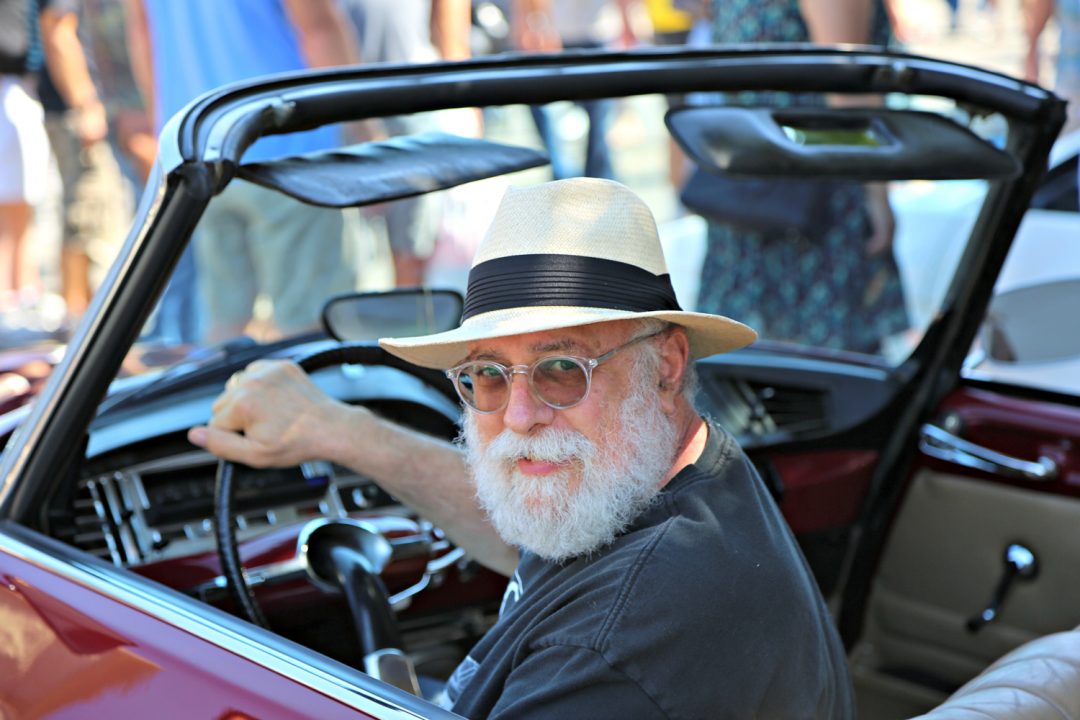
Now with close to a quarter of a million miles on the car, it still feels solid and rattle-free, a testament to the car’s engineering and design, plus the loving care bestowed upon it by its owner for over 40 years. In recent years, Stern’s Goddess is showcased with his art at his studio in Benicia, California. In the last decade, Stern has enjoyed displaying the car at Citroën club events and Bay Area Concours shows, winning many awards as a result. Most recently, it was awarded the Michael Furman Artist’s Choice Award at the 2017 Carmel by the Sea Concours on the Avenue. “Mr. Furman and I agree that it is a car that exudes design and aesthetic excellence that satisfy an artist’s eye.” Says Stern, “I’ve had the Chapron-bodied Citroën for 41 years now, it proudly sits in my studio like a sculpture waiting to be driven on special occasions.”
SPECIFICATONS
1964 Citroën DS19
Engine: 4 cylinder inline
Valvetrain: Overhead valve
Displacement: 1.9 liter
Bore/Stroke: 78×100 mm (3.07 x 3.94)
Horsepower: 83 bhp @4500 rpm
Torque: 105 lb-ft @3500 rpm
Carburetion: 1 Weber carb
Transmission: 4-speed manual
Drive: Front engine, front-wheel drive
Wheelbase: 123 inches
Length: 189 inches
Width: 70.5 inches
Height: 57.8 inches
Curb weight: 2,822 lbs
Brakes: Four-wheel disc / power assisted via central hydraulic system
Top Speed: 103 mph
0-60 mph: 17.7 seconds (sedan)
Factory Production: 184 in 1964, 1365 total 1960-1971
Club affiliation: http://citroencarclub.us/


